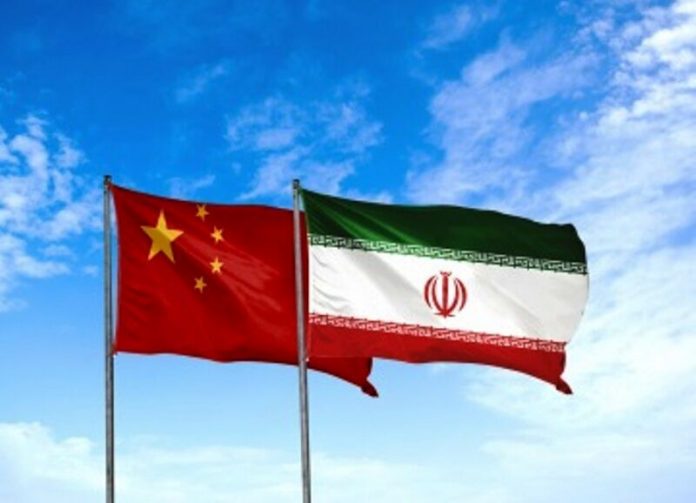A Pakistan government’s think tank says a new strategic regional cooperation is emerging in the shape of Iran-China 25-year cooperation which would not only make Iran an integral part of the BRI, but will also weaken the US influence in the Middle East.
Fatima Raza Research Associate of the Center for Middle East and Africa (CMEA), Institute of Strategic Studies Islamabad (ISSI) in her report analyzed the nature of the Iran-China Strategic Partnership Program, the US sanctions and the future of Iran, Pakistan and China cooperation.
The report said Iran and China are reported to be in the final stages of finalizing a $400 bn deal for strategic partnership, including massive Chinese investments in energy and infrastructure projects, closer defense cooperation, intelligence sharing and sale of discounted oil from Iran to China. Once finalized, the deal will have a major impact on the geopolitics and economics of this critically vital region.
During a state visit to Tehran in 2016, the Chinese President Xi Jinping had proposed a comprehensive deal to forge a long-term strategic partnership between the two countries.
**What Does the Deal Entail?
The analysis said the deal entails China’s presence in various sectors of the Iranian economy such as banking, telecommunications, ports, railways and several others. In return, Iran is offering long-term oil supply on discounted rates over the period of the next 25 years. Pages from the document also indicate proposed Sino-Iran cooperation on fighting cross-border terrorism and drug and human trafficking.
The most significant aspect seems to be the proposed defense cooperation framework in the deal, including military cooperation through joint trainings and exercises, joint research, weapons development and intelligence sharing. Chinese investments would total $400 billion over a period of 25 years, with $280 billion in the energy sector while the rest of the $120 billion to other economic sectors in Iran.
The deal encompasses both economic and defense cooperation turning it into a massive long-term ‘strategic partnership’ between the two rivals of the United States.
**Sino-Iran Deal and US Sanctions
It added this deal would help Iran to encounter the unjustified US sanctions on the country. Rigid US stance of piling on the pressure without considering the humanitarian or political implications of its sanctions regime created room for another global power to showcase its strategic depth translating into this robust Sino-Iranian partnership.
The deal provides a mechanism to evade sanctions whilst boosting e-RMB, China’s new digital currency against the US dollar.
**Strategic Dimensions of the Deal: US in Dismay
The analysis further said being an energy centric economic agreement with several diverse areas of cooperation, the Sino-Iranian deal has an added strategic advantage for both countries involved, i.e. defying US interests in the region, thus making it all the more attractive for both countries.
With about a 100 different projects on the cards, the deal is in tandem with BRI’s theme of regional connectivity while the aspect of military cooperation between the two has certainly caught America’s immediate attention.
China has proposed building several ports in Iran, especially in the Strait of Hormuz, which means it will have unencumbered access to one of the major chokepoints of oil supply in the world.
In 2015, China had opened its first overseas military base in Djibouti which has worried the US despite the latter’s heavy military deployment all over the waters of the Persian Gulf for years. This Sino-Iran partnership comes at a crucial point in time for United States which faces internal turmoil, racial protests and the devastating impact of the coronavirus pandemic on its health sector.
It noted presidential elections make the future even more uncertain as Trump’s presidency has surely brought US global leadership capabilities into question.
The report added particularly with reference to Iran, Trump’s unilateral withdrawal from the Iranian nuclear deal was an ill-advised step that not only strengthened Iranian defiance of US policies, but indicated its inability to abide by multilateral agreements.
It also undermined US leadership clout within the European Union (EU) where signatories of the JCPOA continuously urged US to return to the deal.
Thus, this lack of foresight seems to have placed China into an advantageous position vis-à-vis Iran and the entire Middle Eastern region. Once Iran becomes an integral part of the BRI project, its regional Arab rivals would also seek China’s cooperation based on their already existing economic ties. This move could seriously undermine US influence in the Middle East as the only dominant power.
**Pakistan, China and Iran
The report said prospects for Increased Cooperation Iran has shown its inclination to participate in the China-Pakistan Economic Corridor (CPEC) on several occasions, calling it an opportunity for regional prosperity.
Now that Iran and China are close to signing a comprehensive deal with features of energy and transport infrastructure that are quite similar to that of CPEC, it seems quite plausible that Iran could also participate in CPEC projects.
Pakistan and Iran need to utilize this opportunity to enhance their economic cooperation and exploring a way to revive the Iran-Pakistan gas pipeline project by inviting China to be a part of this historic connectivity venture.
However, even with the signing of this deal, circumventing US sanctions will be an uphill task. But surely, it marks a significant shift in global political and economic atmosphere which shows that China is a new and powerful global player./IRNA




